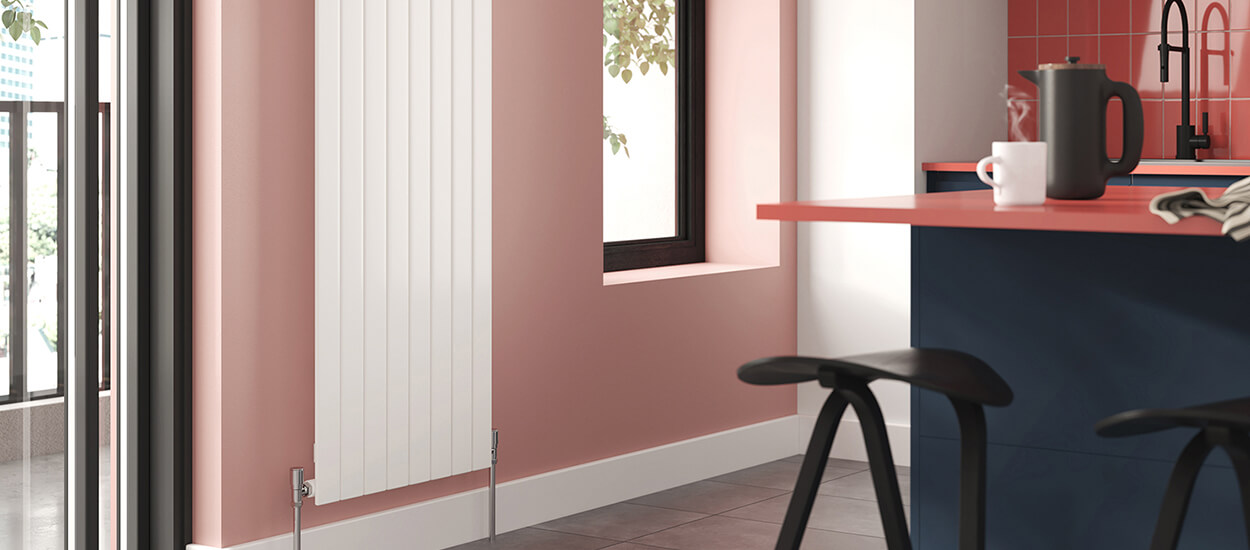Over the years, there have been tremendous developments in home heating, especially when it comes to design and style options. Nowadays, there is plenty to choose from when it comes to radiators. With so many different sizes, styles, and colours, deciding which radiator is best for your home can be tricky.
The classic column radiator is one of the most traditional radiator designs and very popular among those who love beautiful home interiors. It’s period-style look is very appealing, but it also differentiates from standard panel radiators in several ways.
This article provides an overview of column radiators to help you understand how they’re set apart from other options and covers the main differences between two and three columns. 2 column vs. 3 column radiators – the battle is on!
What Are Column Radiators?
In general, column radiators are known for their style – made from hollow tubes of mild steel or cast iron, and they’re very trendy. Mild steel column radiators offer the same character and charm as cast iron, but they are lighter and can heat up much more quickly.
Column radiators are very popular for the great heat emission. Traditional engineering means this radiator type boasts one of the most longstanding designs and is famed for producing significant heat output compared to other radiator types.
The main reason column radiators emit more heat than others are due to their larger surface area. Consequently, a greater amount of heat can be pushed around the room in comparison to other radiator types of similar dimensions.
How Do Column Radiators Work?
Column radiators, like many others, work off the main central heating system in your home. They have hot water flowing through them which heats up the columns and the air around them.
With all radiators, as the air is heated it rises. Then cool air replaces it. This creates a convection current that allows heat to spread throughout the room.
2 Column vs. 3 Column Radiators – The Main Difference
As the name suggests, column radiators are made up of a certain amount of metal columns. There are no single column radiators compared to standard panel radiators – where you have type 11, 21, and 22. Instead, there are 2 Column vs. 3 Column Radiators vs 4 Column Radiators. A general rule of thumb for column radiators is that the more columns, the higher the heat output. For example, a two-column radiator will have two rows of columns, whereas you could get three or four rows of columns for increased heat output.
The number of columns you need will of course depend on the amount of heat needed to warm your room. Therefore, it’s important to use something like our radiator size calculate, which considers room size and number of windows to suggest the size of radiator you need. Choosing the right size is vital. Otherwise, you’re at risk of under or overheating the space.
Fortunately, our range of column radiators at Stelrad boasts a variety of sizes with horizontal, vertical, and low-level options to suit different spaces.
Considering the amount of years column radiators have been around, many people wonder how they compare to more modern types of radiators in terms of efficiency.
Are Column Radiators More Efficient?
Column radiators are well known for being very heat efficient. Due to the large surface area created by the columns and spaces in between, they are very effective at heating the surrounding air. This is particularly in comparison to standard single or double panel radiators with a solid steel front panel and one or two sets of convector fins attached to the back.
In standard panel radiators, the heat is transferred to the convector fins to help increase the surface area and circulate warm air. However, this is arguably quite wasteful. Indeed, column radiators don’t have to heat additional metal parts to do their job. They are more or less giant convector fins in themselves.
Not only are column radiators stunning in the right interior, they also radiate just as much heat as they do beauty. Due to their design, air is heated quicker and the convection cycle of heat within the room happens more quickly than panel radiators. Therefore, one could argue that even though panel radiators often have higher BTUs and heat rooms quite quickly, the room can get just as hot, if not hotter with column radiators in comparison. Event though their BTUS are lower, their design transfers heat further and faster.
It goes without saying that if your home is heated quicker, then you may not need to have the heating on for as long which could help save you money on your heating costs.
The Benefits of Column Radiators
Due to their heating efficiency, column radiators suit large living spaces with high ceilings that need a lot of heat.
Moreover, they are available in both horizontal and vertical column designs, meaning they can be positioned either way, whether low-level space underneath windows, or skinny gaps of wall space between furniture and room designs. Some homeowners even double up to introduce symmetry and create a feeling of grandeur in large spaces and.
A few style options of column radiators include:
We hope this article had provided you with the information you need to understand 2 column vs. 3 column radiators better and the different ways they distribute heat. Finding the best radiator for your home has a lot to do with personal choice, style, and price.
If you have any questions or need any advice regarding 2 column vs. 3 Column Radiators or column radiators in general, please don’t hesitate to get in touch.

